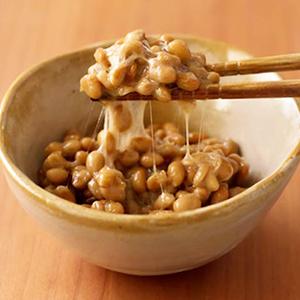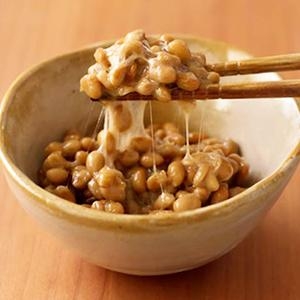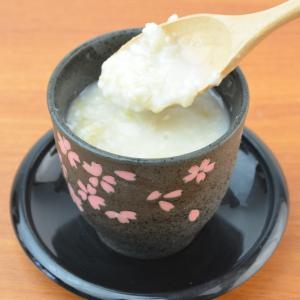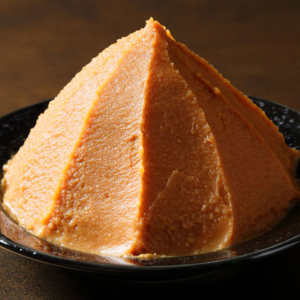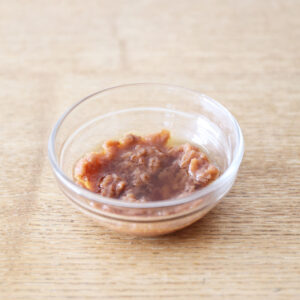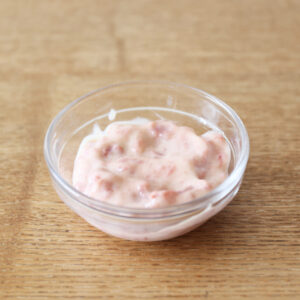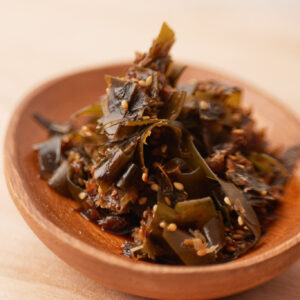Welcome to Kawashima the Japan Store. In this article, we will introduce what natto is, as well as the ‘how-to’ of making natto at home with the natto starter kit.
What is Natto?
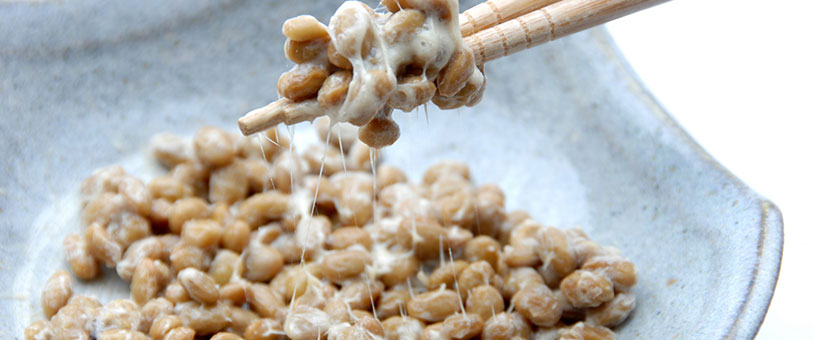
Natto is a traditional Japanese food made from fermented soybeans. It has been known since ancient times. Many people eat natto, so you can say that it is a food that is loved by many generations.
Making natto includes a fermentation process to convert carbohydrates into alcohol or organic acids using microorganisms (natto starter/natto bacillus) under anaerobic conditions. Therefore, the ingredients of natto are soybeans and natto starter only.

Natto has a sticky and slimy texture, strong flavor, and a rather strong smell. A lot of people love natto, but there are also many people who dislike it. For you who haven’t tried it yet, please try by all means!
In Japan, natto is very popular. We can say that all Japanese know natto. Japanese people usually eat natto as a breakfast food. In addition, natto is unexpectedly good for your health. It has many nutrients in one serving. This tiny, sticky little thing will keep you healthy if you consume it!

The Nutrients of Natto, a Superfood from Japan
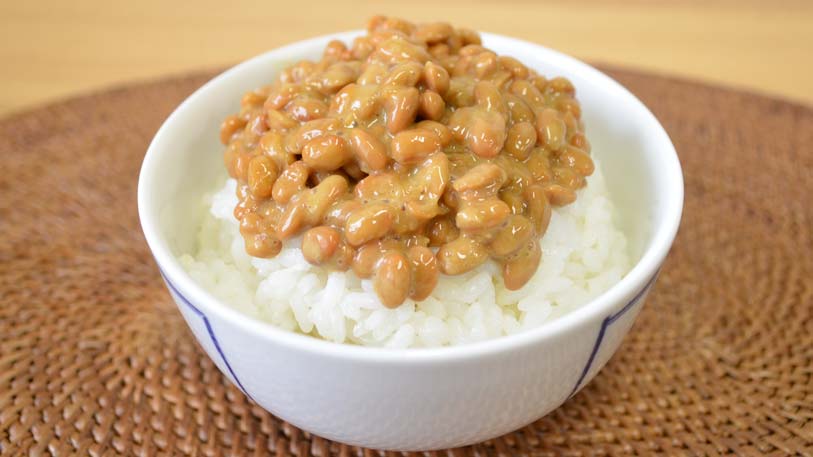
According to the Japanese Population-Based Osteoporosis (JPOS) Study, the consumption of natto has many benefits such as protection against breast cancer, prostate cancer, menopausal symptoms, heart disease, and osteoporosis. These benefits are derived from the isoflavones inside natto.
These are five health benefits you can get from natto:
1. Natto Contains Probiotics

The soybeans in natto undergo a fermentation process which creates conditions that promote the growth of probiotics. Probiotics are the “good” and “helpful” bacteria that have many benefits to our body. Some of the benefits are they improve your food digestion, as a defense against toxins and harmful bacteria, and can help reduce gas, constipation, and bloating. Probiotic content also helps to cure diarrhea.
2. Natto is Rich in Vitamin K

Natto is abundant with vitamin K. A serving of nattō (100g) provides 29% of the Daily Value (DV) of vitamin K.
It’s rather easy to find another food with vitamin K1. You can find vitamin K1 in many green vegetables such as spinach.
However, another important K vitamin, vitamin K2, is not as easy to find. Vitamin K2 is produced by bacteria, and natto happens to be rich in it. Vitamin K2 delivers a wide range of health benefits, such as maintaining bone density, and supporting bone health by increasing bone mass and slowing bone loss, and is associated with a lower risk of heart disease. Lack of vitamin K in your bloodstream puts you at risk of osteoporosis, bleeding, and delayed healing of bruises and wounds.
3. Natto is One of The Sources of Vitamin C

A serving of nattō (100g) provides 22% of the Daily Value (DV) of vitamin C. Natto has a higher antioxidant activity capacity than raw soybean because it is fermented.
Vitamin C, also known as antioxidant vitamins, is among the essential nutrients your body needs. This vitamin is suggested to decrease oxidative damage and could lower the risk of certain chronic diseases.
It also could boost your immunity by helping the body to fight off infection.
4. Natto Can Help You Lose Weight

Natto is the best choice for those who want to maintain a stable weight or when dieting.
It is because natto contains just over 200 calories with 5g of dietary fiber in one serving. This content could help you to control your diet.
The dietary fiber content in natto fulfills 22% of the Daily Value (DV). The good thing about dietary fiber is it makes you feel fuller, so it’s good to eat natto in your breakfast. Dietary fiber also promotes the digestive system to work more effectively.
5. Natto is Good for the Skin

Natto is rich in a vitamin known as pyrroloquinoline quinone (PQQ) that is important to maintain healthy, beautiful skin.
Vitamin PQQ can help you maintain beautiful and healthy skin – which makes you look younger.
You can prevent the effects of premature aging. This vitamin is the perfect addition to your diet.
It is also said that the best way to consume soybean is fermented soybean, such as natto, miso, or tempeh.
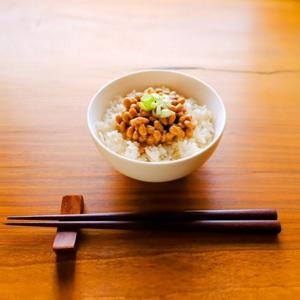
There are two types of natto; itohiki natto and tera natto. There is also dried natto – which is safe to be shipped abroad because it is freeze-dried. The types of natto can differ in their taste and structure. Feel free to taste it and find your own favorite type!
Itohiki Natto
Itohiki natto is the usual natto that we know.
We tried all types of Itohiki Natto so we’ll tell you about our comments and its differences! Itohiki Natto (stringy natto) can be categorized into 3 types:
1. Marudaizu Natto
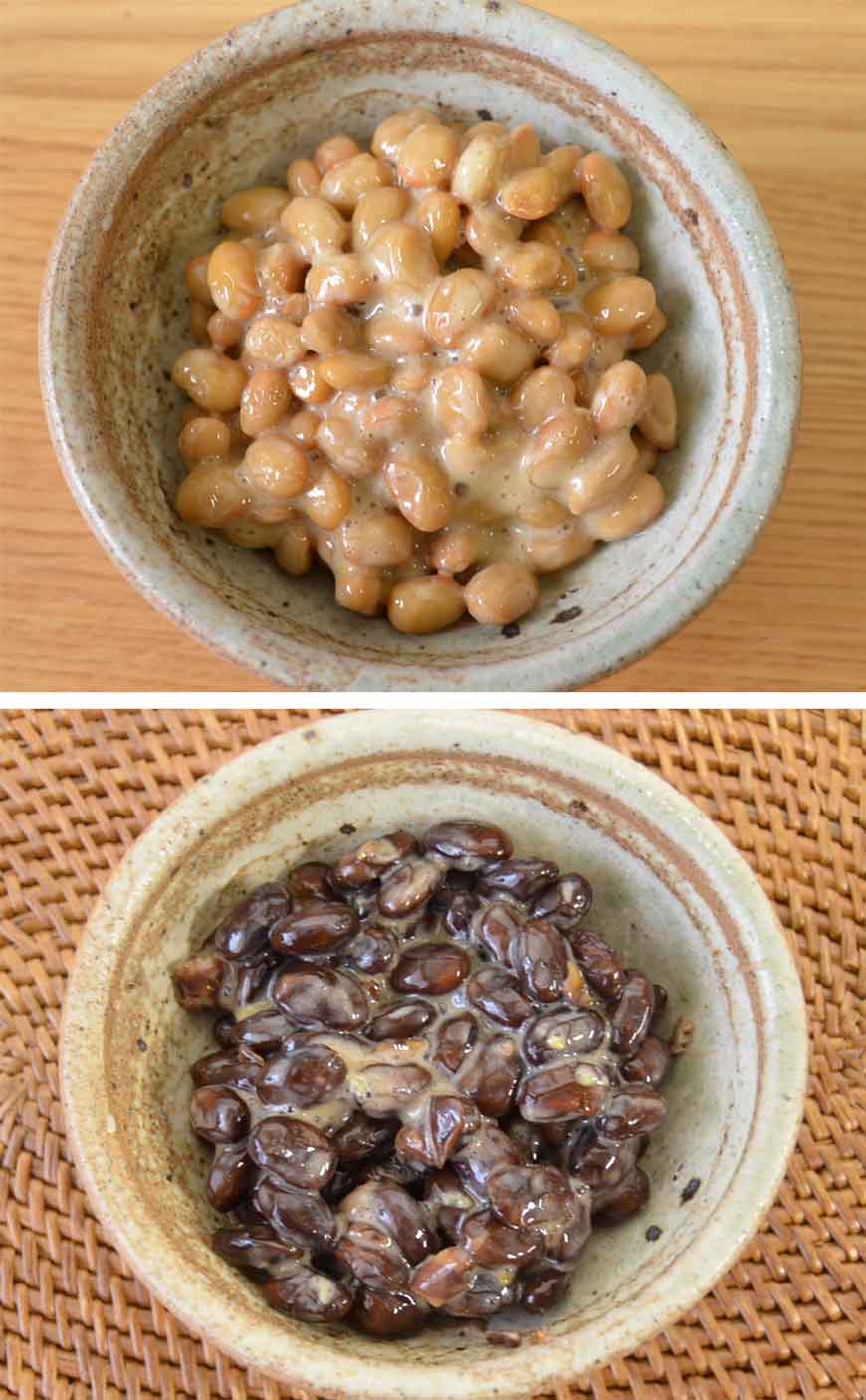
Marudaizu or whole-soybeans natto uses whole soybeans and fermenting them to become natto. This type is the most popular one.
The size of the bean used will affect the natto’s stickiness. The bigger the bean, the less sticky things get when you mix it. So if you are new in this “natto world”, choosing bigger beans will be a good choice for beginners.
We also taste the marudaizu natto which is made with black soybean. The taste is more flavourful compared to the yellow soybeans.
Black soybean natto usually uses soy sauce and wasabi as their topping. The topping gives a little spiciness at first (wasabi), but it becomes refreshing once you chew it. As for the smell, black soybean natto has a weaker smell and it won’t bother people who don’t really like natto.
2. Hikiwari Natto
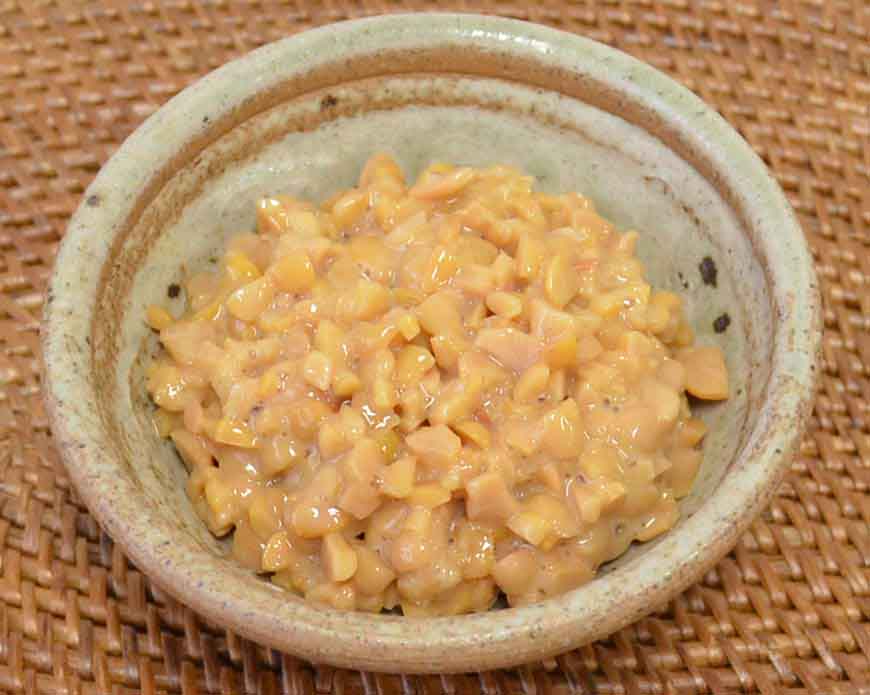
The grounded natto is made by roasting soybeans -> grinding soybeans -> removing the peel -> and boiling soybeans. This type of soybean creates more surface area for the bacteria to grab onto, making this natto the stickiest and strongest tasting of them all. Hikiwari natto is easy to eat because of its small, chopped size. The taste is also fresher than marudaizu natto.
I would like to recommend this natto for you who already like to eat natto. Because it is more sticky compared to the usual marudaizu natto, this can be your next challenge in your natto-eating experience.
3. Goto Natto
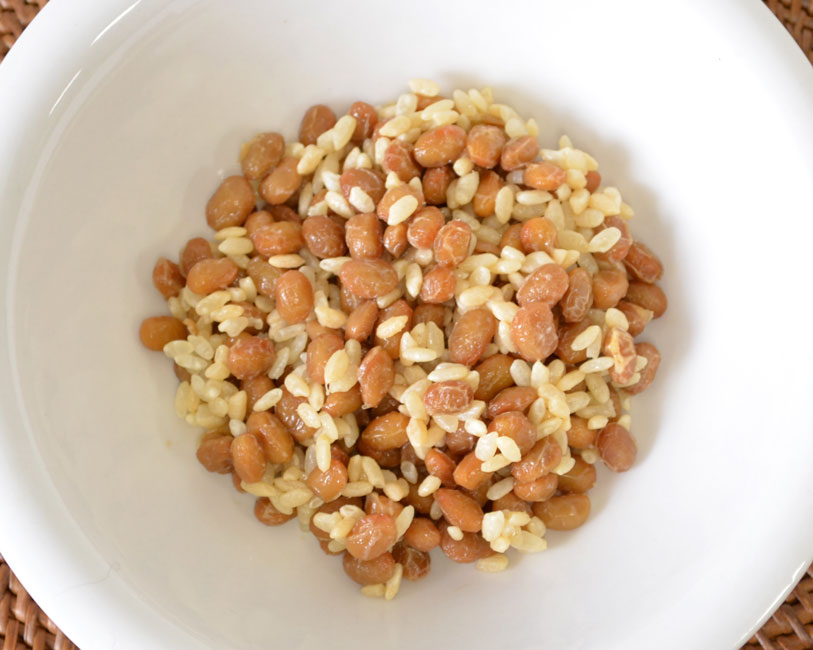
Goto natto is a fermented form of natto, koji (malt), and salt. It took around 1 week to complete the fermentation process. Its origin is from Yonezawa, Yamagata Prefecture.
After having been changed to be made with less salt, it is sold under the name of “Yukiwari Natto.
We tried to make the traditional style Goto Natto and fermented it for 1 week, and the taste is amazing!
At first, we thought that Hikiwari Natto had the strongest taste among all natto variations, but Goto Natto has the strongest taste after all. It has a strong aroma and taste and is a little bit salty (depending on how much you put salt) but at the same time, you can enjoy a little bit of sweetness from the rice koji. The texture is not that sticky and sometimes the rice koji is sticking into your teeth. The strings became thinner and not as sticky as Marudaizu Natto.
As you can see in the image, the natto’s color darkened because of the fermentation process. Usually, natto’s taste will become awful when you leave it for a few days. But in this case, the beans are still tasty. You can normally eat it with rice or another topping.
“This combination (natto, rice koji, and salt) increases the umami of natto!”
Not many Japanese people know about this Goto Natto, even though we tried to make it for the first time. So, why don’t you take your try too?
Tera Natto
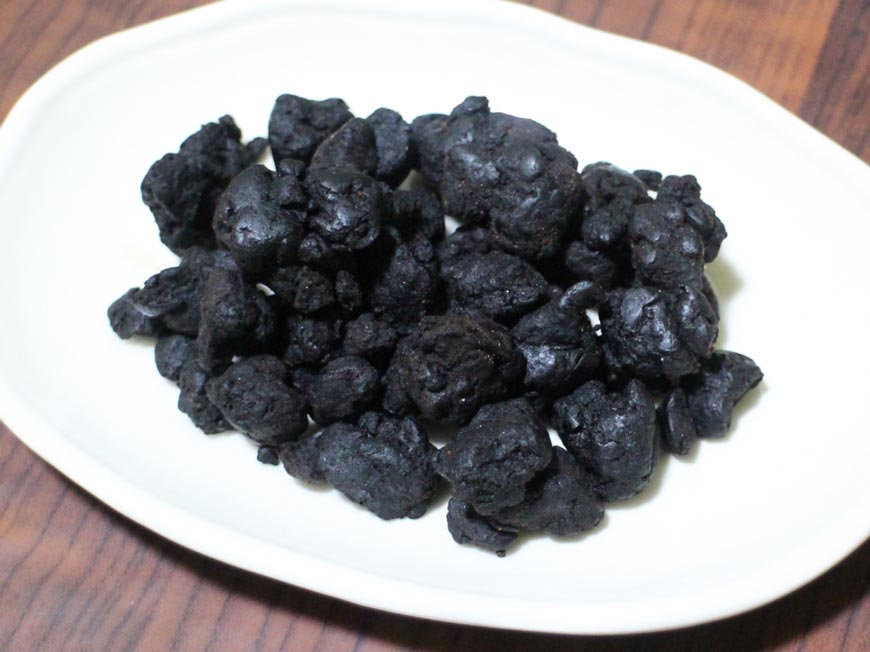
Another type of natto is called Tera Natto (Shiokara natto or salty natto). Tera natto is said to be first made by monks in temples. It was produced in one of the Buddhist temples called “Nassho” which became the origin of natto’s name.
Tera natto is another kind of natto that does not stick. It is a savory fermented black soybean that has a similar taste to red miso.
The production uses using koji-mold, and then salt is added before the mixture is set aside for the fermentation process which takes approximately six months.
Like the usual natto, Tera natto can be eaten plain or added to dishes like miso soup (mix it with hatcho miso will be delicious), or make a kinkan maki.
Dried Natto
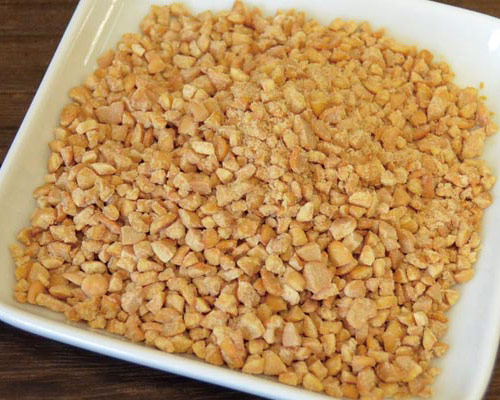
Dried natto is natto that is immediately freeze-dried. In Kumamoto Prefecture, dried natto is called “Korumame” and it has been popular since ancient times too.
It has the same flavor and taste as natto even if it is dried. Also, dried natto is not sticky like normal natto. So it’s easy to consume, and good for those who don’t really like sticky natto but still want to take natto’s nutrients. Instead, the umami and nutrients are improved because it is frozen.
Some commercially available dried natto may contain a lot of salt. However, Kawashima The Japan Store has a salt-free dried natto. It is also free of food additives, salt, sugar, oil, and genetically modified soybeans. So you can consume it without worry. Click here to read more about “Dried Hikiwari Natto 45g (Domestic Soybean 100%)”!
How to Make Natto
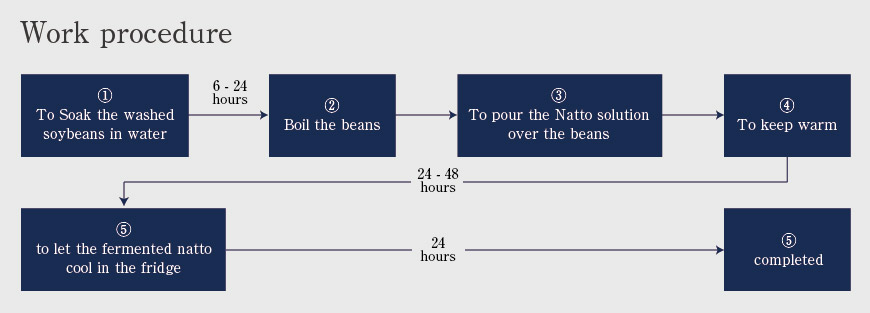
Ingredients To Make Natto
It Would be Handy If You Have The Following Items
- Electric food warmer
- Pressure cooker
Steps to Make Natto
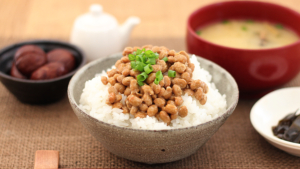
How to Make Natto
Equipment
- 1 Pressure Cooker or Food Warmer
Ingredients
- 0.1 g Natto Starter
- 100~1000 g Soybeans
Instructions
Step ① Wash the beans
- Put the beans into a bowl and wash them well by rubbing them together. Be careful not to break the skin. Soil and other impurities on the surface of soybeans has tons of microorganisms that have adverse effects on making Natto. Make sure to wash off all the dirt and debris.
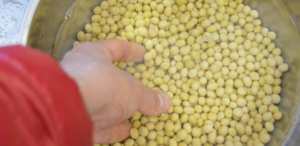
Step ② Soak the washed soybeans in water
- Soaking time differs depending on the season. In spring and autumn, you have to soak the beans for 15 hrs on 10-15 degrees celsius water temperature. In summer you have to soak the beans for 6 hrs on 20-25 degrees celsius water.When the temperature is too high, cover the bowl with plastic cling wrap and leave in the fridge for about 24 hours.The beans expand about 4 times more than the soybean weight.

Step ③ Boil the beans
- Boil it until it’s easily squished, by nipping with thumb and index finger. The beans should have a slightly hard texture when fermentation starts, so make sure to boil them until tender.It takes approx 30 mins for a pressure cooker to cook. (You can boil it with regular pot as well)(The result may vary depending on a cooker. Please refer to the instruction manual for the exact cooking time)
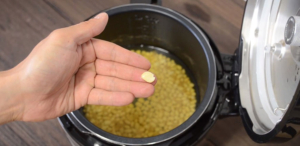
Step ④ Dissolve Natto starter into water and make a Natto solution
- Pour 10ml of water (pre-boiled and then cooled water is fine too) in a cup and dissolve 0.1g of Natto starter in it. Use this Natto solution to ferment the beans. It is easier to succeed with more Natto solution. For beginners, use a greater amount of Natto starter than this recipe is recommended.
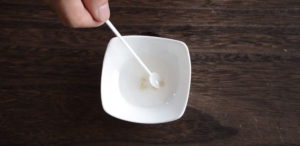
Step ⑤ Pour the Natto solution over the beans
- Discard the boiled water. Then quickly pour the Natto solution and mix thoroughly.Don’t let the temperature to drop, as it can lead to unwanted bacterial contamination.Make sure to prepare the Natto solution as soon as the beans are boiled.
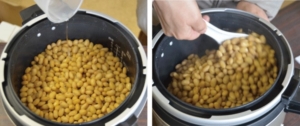
- Transfer the beans from the pot to a food warmer such as rice cooker, pressure cooker, or a Yogurt Maker. In this tutorial, we're using a food warmer function of a pressure cooker.Keep the soybean mixture in a warmer for 24 hours to ferment.The best temperature for Natto solution to ferment is 40 to 45 degrees celusius. Keep the temperature steady at 45 degrees and set the timer for 24 hours when using a food warmer.
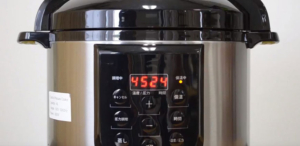
- After keeping the beans warm for 24 hours, let’s check the fermentation condition. It looks well fermented however it still has a strong ammonia smell at this point.
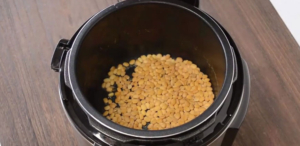
Step ⑥ Let the fermented natto cool in the fridge
- Transfer the fermented beans to refrigerator to mature. By resting the beans in a fridge for a day, amino acid composition of soy protein will enrich the flavor of Natto. Let’s see how the natto is after resting it overnight.

- It is perfectly fermented and there is no smell of ammonia. Tasty natto is now ready to be served. In this tutorial we used 165g of soybean The finished natto weighs 721g
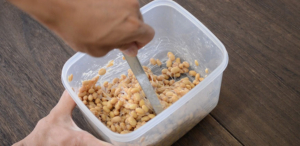
- If you are not planning to eat it immediately, keep it in a freezer. If you leave the natto in a place where the temperature is high, amino acids are broken down and can cause ammonia smell. When it is stored in the fridge, a white rough substance will start to grow which will give it a bad texture in a week or so.The taste and flavor of natto differs greatly depending on the fermentation time and the types of soybean. You can decide on what type of soybean and how long you want to have it in fermentation.
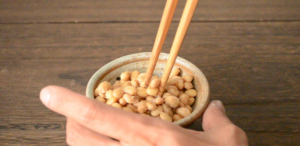
How to Eat Natto Deliciously
Natto is said to be a Japanese-style breakfast’s classic menu. Almost all of the Japanese households have stocks of this fermented food. Some people can’t eat it, but you can’t argue that natto has nutrient benefits for your health!
Learn how Japanese actually eat natto to improve your natto-eating experience.
There are many delicious ways to eat natto. You can eat as it is, as dressings, or use it in cooking. One of these methods may become your favorite, so please check it out!
1. The traditional way with toppings
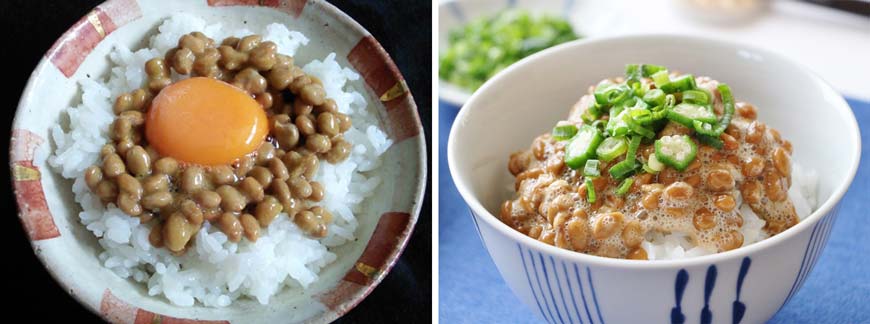
Japanese people love to eat their natto with toppings. Each person would have their own preference, but here’s some topping to choose from:
- Raw egg
- Shoyu (Japanese soy sauce)
- Sliced green onion
- Japanese mustard
- Wasabi (recommended for black soybean natto)
- Nori seaweed
- Kimchi, etc.
Make sure to stir/mix your natto thoroughly. Wait for the texture until it becomes sticky, and that is the perfect time to eat your natto!
You can put your favorite topping at your own preference afterward. Some toppings will need another stir to make the taste even and delicious (shoyu and Japanese mustard, for example).
You can eat natto in the top of your rice. Japanese people say that rice is one of the best natto pairings, especially when the rice is still warm. When you put natto with rice and raw egg, it becomes natto tamago kakegohan (rice mixed with raw egg plus natto as the topping). However, eating it by itself will also be a good choice. You will be able to taste the unique, delicious taste of natto directly into your mouth!
2. Add your natto to dishes

Natto spaghetti
Why not combine Western-style food (spaghetti) with Japanese cuisine (natto)? Japanese people usually add eggs when making natto spaghetti. Or it can be using another ingredient. In addition, there are some Japanese restaurants that already have this on their menu.
Natto maki roll
A maki roll with natto as their topping. You can taste the authentic taste of Japanese rice wrapped with nori (seaweed) with the sticky sensation from the natto.
Natto curry
This dish is for you who currently wondering whether curry is a perfect match for natti, the answer is yes! Japanese-style curry is good with natto.

Natto gyoza
Gyoza is a wrapped dough usually filled with meats and vegetables. But you can also add natto to make gyoza.
Natto soba
Another form of natto with noodles. But this time, it’s soba (noodles made from buckwheat flour). This is another great way to add natto to dishes.
Natto omelet
When eating a raw egg is not your style, you can try to add natto to your omelet. Japanese omelet (tamagoyaki) is one of the Japanese-style recipes. You will need dashi (simple broth made with dried bonito flakes) and Japanese soy sauce to add more umami to the dishes.
Natto Preservation Method
Homemade and moist natto can be refrigerated for 3 days. 1-3 days of aging in the refrigerator will result in more improved flavor.
However, it will last for more days if you store it in the freezer. Don’t forget to place a piece of clear film or food parchment paper on the top of the beans, and seal the natto with airtight container. If you leave the natto in a place with a high temperature, the amino acids will break down and cause an ammonia smell.
On the other side, dried natto is safe to be preserved for a long time at room temperature.
Signs when Natto goes Bad
Natto can spoil due to the incorrect way of preserving it (too long storage time or storing natto at an unsuitable temperature). There are a few signs when your natto goes bad. Please discard it right away when you notice these signs:
- The natto has a strong ammonia smell,
- White rough stuff starts to grow and covers the natto,
- The texture is too firm or too soft,
- The color of soybeans is faded.
Where to Buy Natto
You can find natto in Japan’s grocery store or Asian supermarket. However, fresh natto can’t be shipped overseas because natto has a short storage time. Natto’s quality may degrade because of the shipment, too. The best way to enjoy fresh natto when you are far from buying it is to make it yourself. You can also enjoy dried natto because it’s safe to be shipped overseas.
In Kawashima The Japan Store, we are shipping natto starter (Bacillus subtilis natto), good-quality organic soybeans, and even dried natto. Please take a look!
“How to Make Natto” Q&A
Recommended Products for Natto
Also Available On Amazon USA
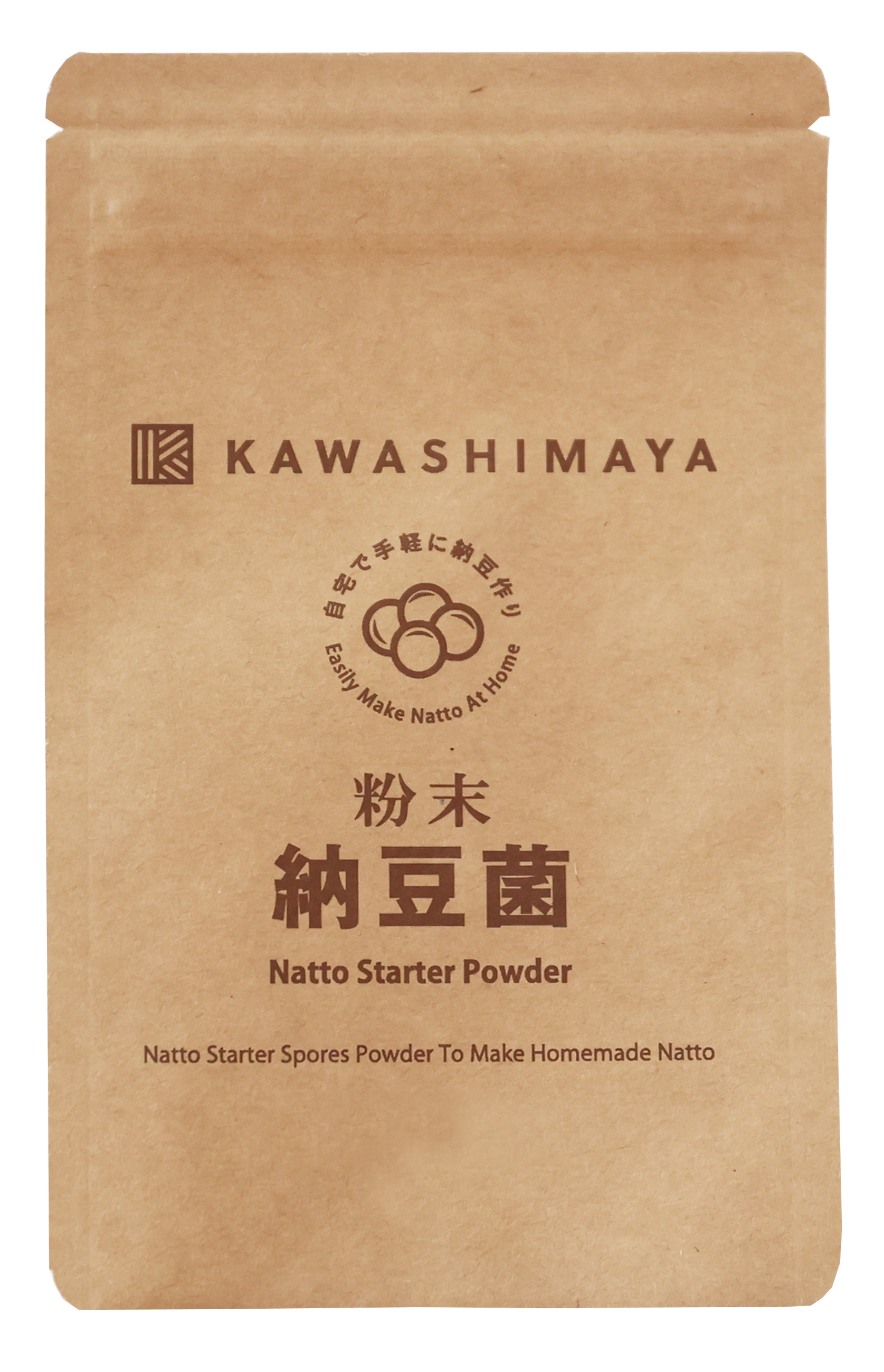
Natto Starter Spores Powder – 100% Organic Soybean Extract【Made in Japan】 (3g)
Easy-to-use rice koji powder with abundant enzymes to make Japanese Easily make natto at home with this natto starter powder and get the best health benefits of natto every day! We use 100% purely cultured natto starter extracted from organic soybeans (not genetically modified). Compared to the general natto starter, this product is characterized by its strong fermentative power.

